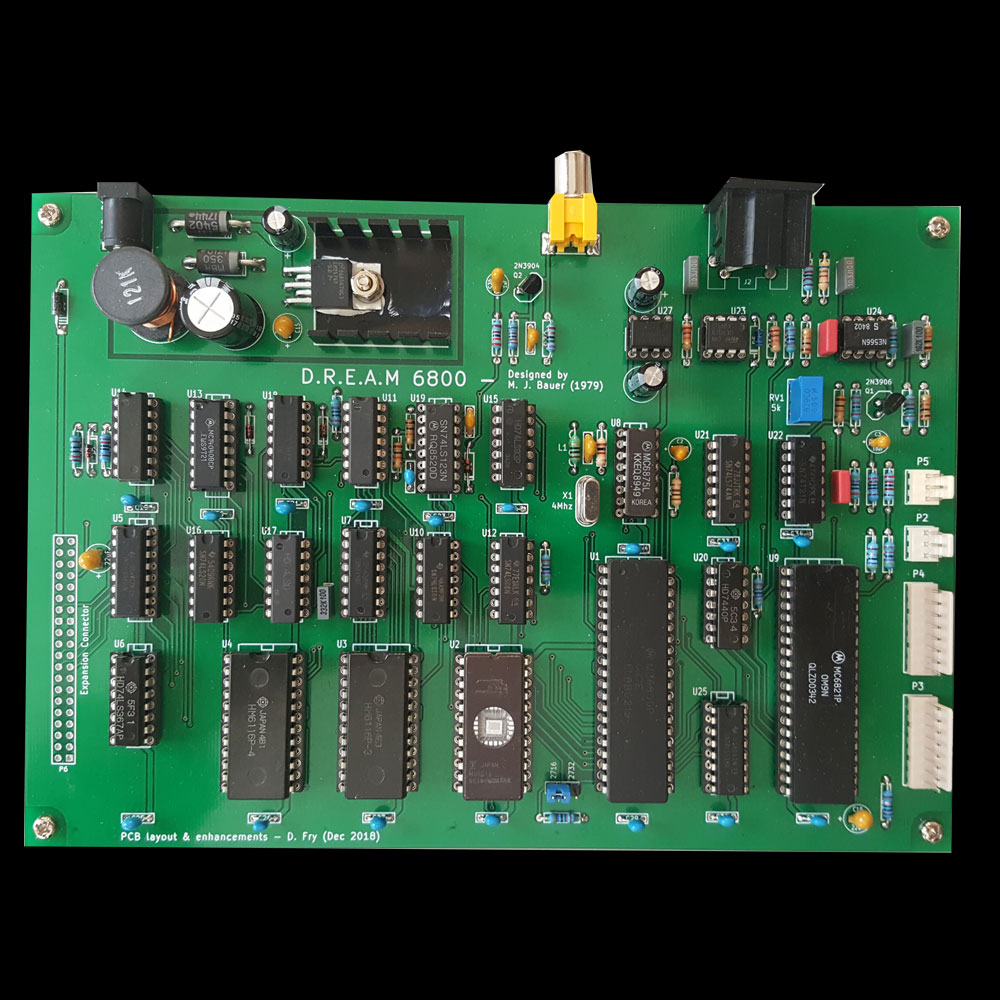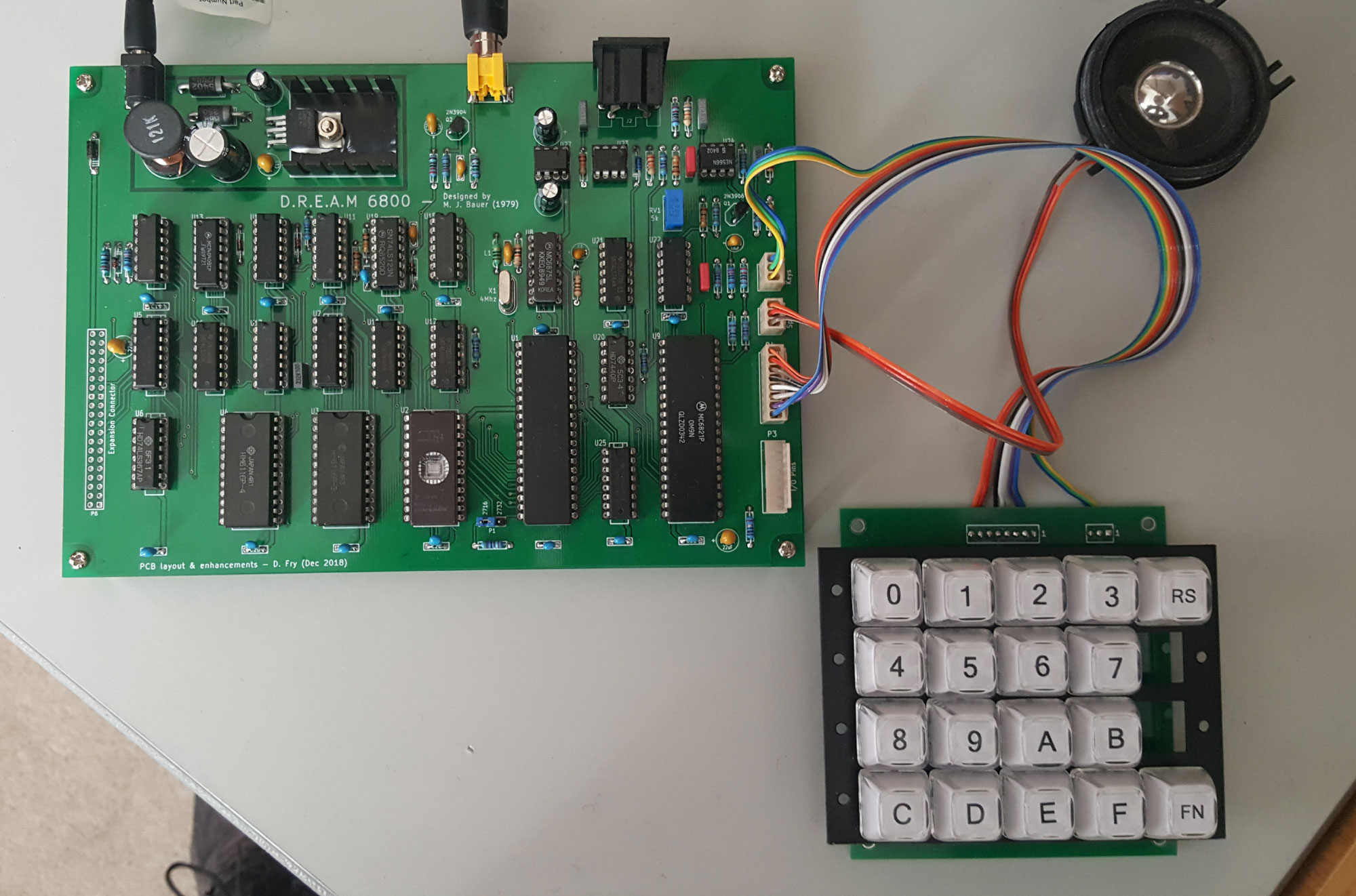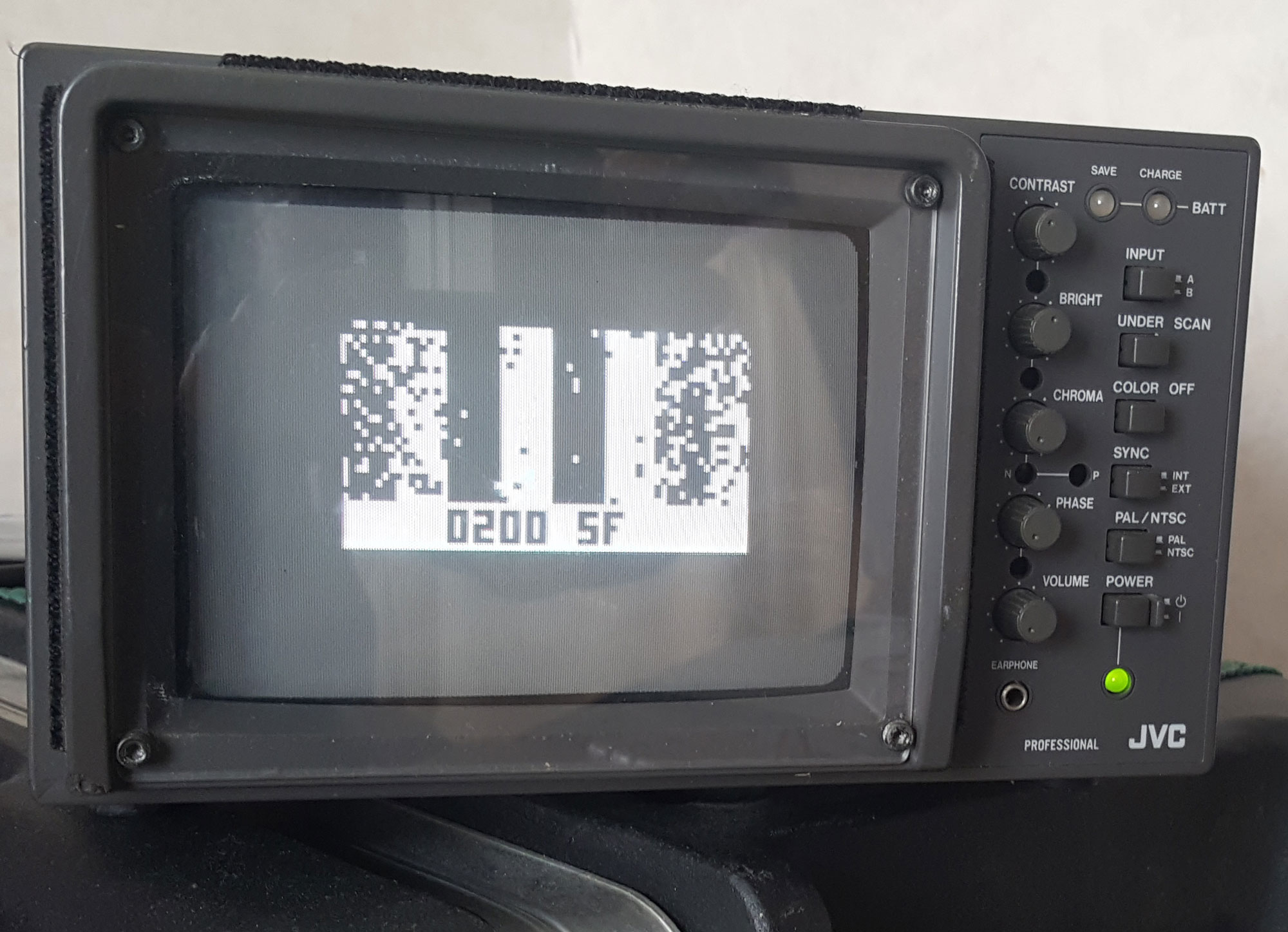The DREAM 6800 (Domestic Recreational Educational and Adaptive Microcomputer incorporating the Motorola 6800 microprocessor) was designed by Michael J Bauer from Brisbane’s Deakin University. It is not particularly sophisticated but at the time offered those handy with a soldering iron the opportunity to build a simple computer that would be a lot of fun to use. It offered programming in two languages: native 6800 machine code and a strange but quite powerful language called CHIP-8 (Comprehensive Hexadecimal Intetpretive Programming- 8 bit).
In its basic form, the language features thirty-three two-byte instructions and had been developed at the RCA Laboratories in the US by one Joe Weisbecker in the 70s, principally for those interested in writing their own games programs. RCA also developed a computer called the COSMAC VIP, that could run programs written in CHIP-8. At the time it was termed a “high level” language but it would hardly even begin to qualify for that description nowadays. Still, writing CHIP-8 programs was,and still is, fun and of particular interest to MicroBee users is the fact that a CHIP-8 interpreter, cleverly linked to MicroWorld BASIC, was written by a Melbourne solicitor, Lindsay Ford and enhanced CHIP-8 still further by providing additional instructions.
It is to be hoped that it will eventually be able to be run on MicroBee emulators such as PicoMozzy but it does require direct disc access to function, as much of it is menu driven. The CHIP-8 interpreter and monitor program in the DREAM 6800 is housed in ROM and is termed CHIPOS.
It begins at C000H and ends at C3FFH so in all it occupies 1K of memory. Imagine any version of Windows being capable of that? (An unfair comparison you might well say – and you would be conect, of course).
Saving and loading programs is taped-based, and utilises the “Kansas City Standard” with frequency shift keying (FSK) frequencies of 1200Hz and 2400Hz at a rate of 300 bits/second. Screen resolution is 64 pixels wide by 32 pixels high (no, I’m not kidding!) and direct memory access (DMA) for the screen begins at 0100H and extends for 256 bytes (i.e. to 01FFH). There is no colour. Programs are run in memory beginning at 0200H and, for very long ones, it is possible to use an additional area from 0080H to 00FFH.
This computer first saw the light of day as a series of articles that featured in the May, June, July and August 1979 issues of the now-defunct magazine Electronics
Australia and it reappeared in a follow-up booklet entitled Microprocessors and Personal Computers, published
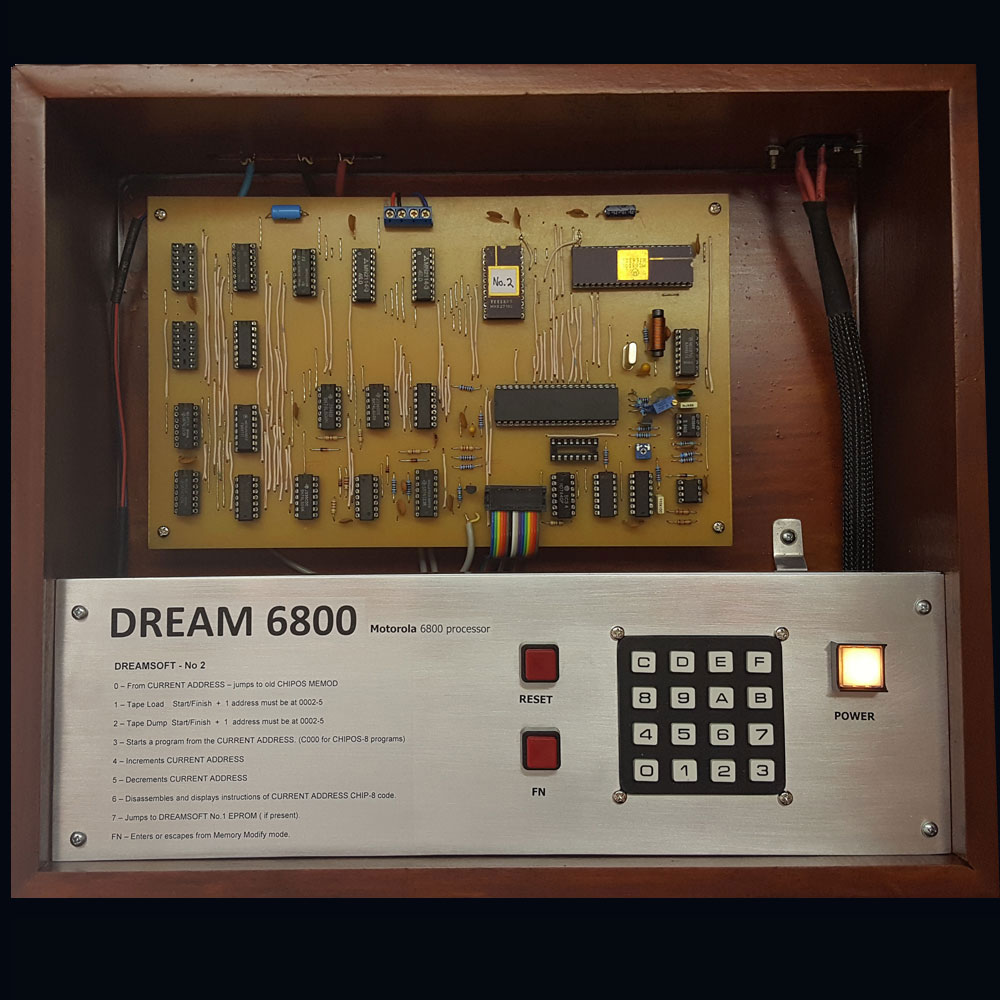
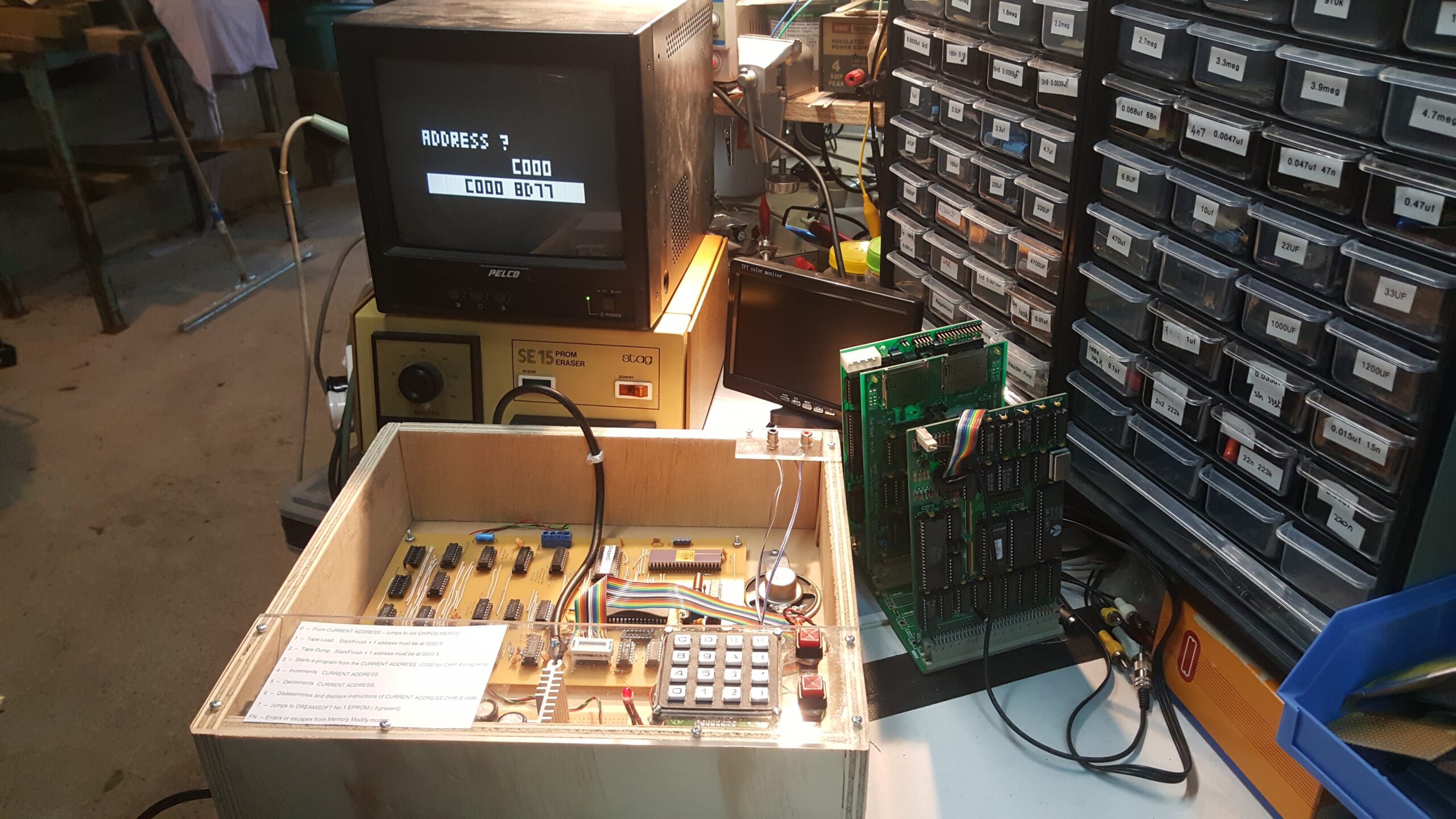
Making a case for it to be put in

Dream 6800 40th Anniversay Vintage computer
Dream 6800 40th Anniversay vintage computer, Has been designed by David Fry (UK), has completed an elegant re-design of the DREAM using a double-sided PCB (pictured below). It has an on-board switchmode regulator for the +5V supply and a DC/DC converter for negative 5V. Memory has been upgraded to 4KB using two 6116 RAM chips. The EPROM can be a 2716 or 2732 type. Otherwise, David’s design remains faithful to the original. The download includes KiCad PCB design files and Gerber files for board fabrication.
Origins of the Dream:
The “DREAM-6800” was a popular build-it-yourself computer which I designed in 1978. The project was published in Electronics Australia magazine in 1979. The Dream was a ridiculously simple hobby computer with 2K bytes of memory that played game programs on a TV. The 1KB ROM (1024 bytes!) contained a simple interpretive programming language known as “CHIP-8”, devised by Joe Weisbecker of RCA Labs.
This inspired the DREAM-6800 which I admit was a blatant rip-off of the VIP concept, except that the Dream video controller circuit was designed around “discrete” 74-series and 4000-series logic IC’s to generate a PAL-compatible display format (50Hz vertical refresh rate, vs 60Hz for the VIP). And my audio tape modem circuit design was 100% original and much simpler than both the VIP and D2 kit tape circuits.
I submitted a much simplified and refined Dream 6800 design to E/A, including CHIP-8 interpreter in EPROM and a bunch of CHIP-8 games (also ripped off from the VIP). This time Jim liked the idea… a DIY project he could spread over several months, without the magazine having to do any development work, with all the text provided on a silver plate! By the way, I did ask permission from Joe Weisbecker to clone his CHIP-8 language and a few games. He was really chuffed that his idea had caught on “down under”.
In hindsight, I regret down-grading the video format to 64 x 32 pixels. This was done not only to minimize price and board size, but also for CHIP-8 program compatibility. But with RAM prices dropping fast, I should have made it 128 x 64 pixels (1KB of RAM), at least. The PCB would have been bigger, but still not as big as the Cosmac VIP. Also, the VIP game programs could have been modified to run on a larger screen format, but I was under pressure from E/A to finish the articles for publication. Annoyingly, by the time E/A was ready to publish the first instalment, higher density RAM and (single 5V) EPROM chips were readily available. But a further delay due to a design revision would have been unacceptable
